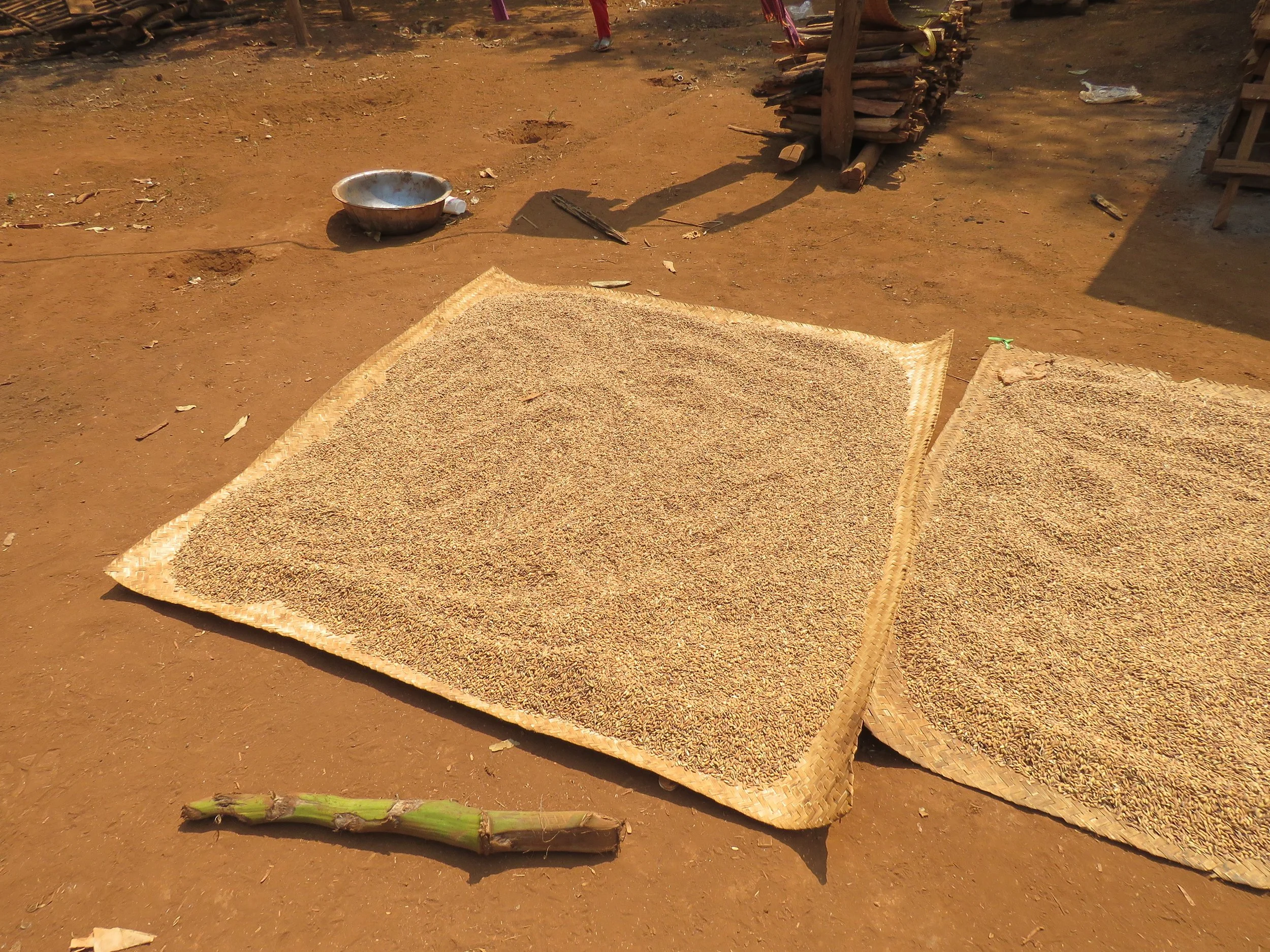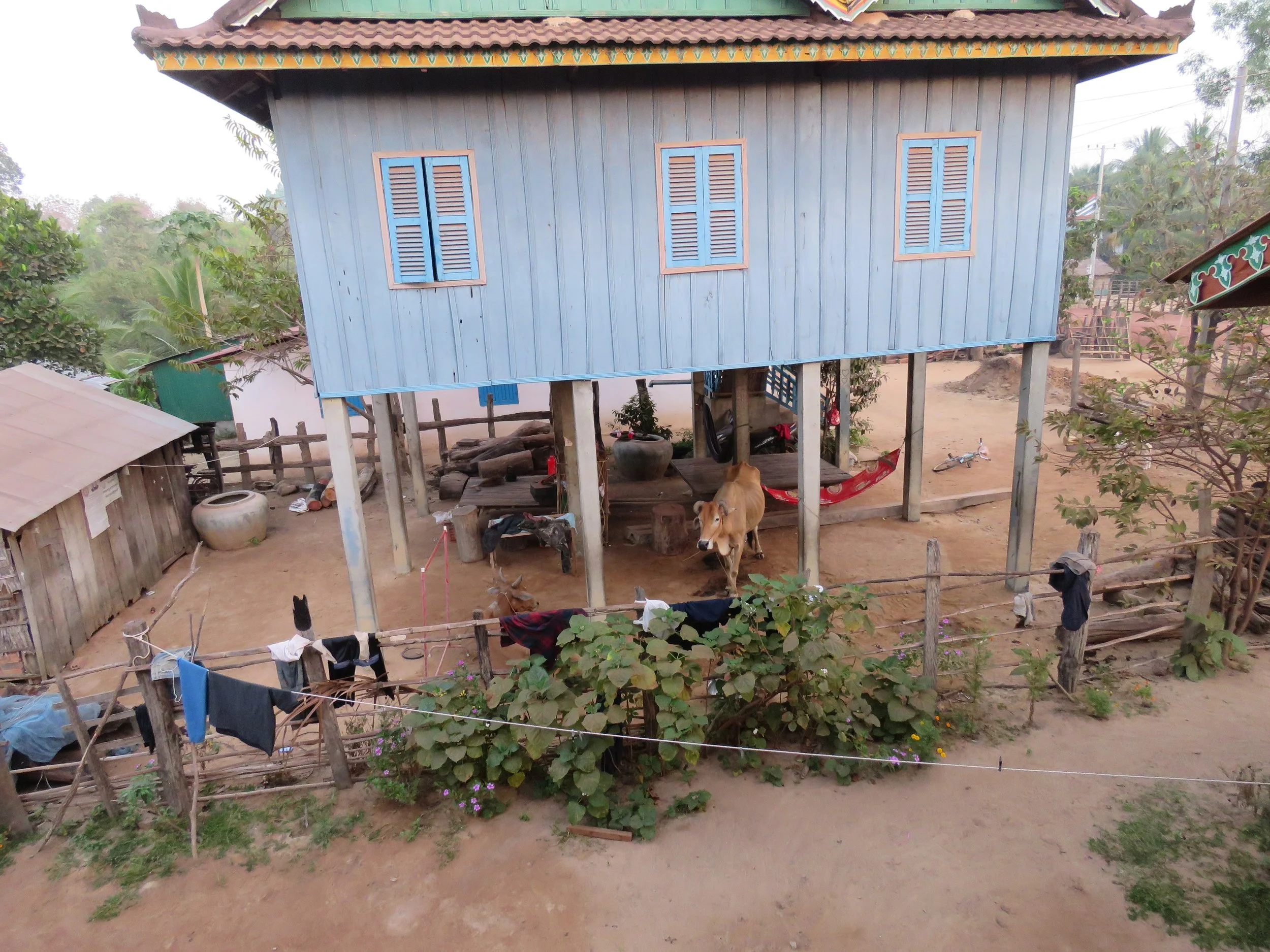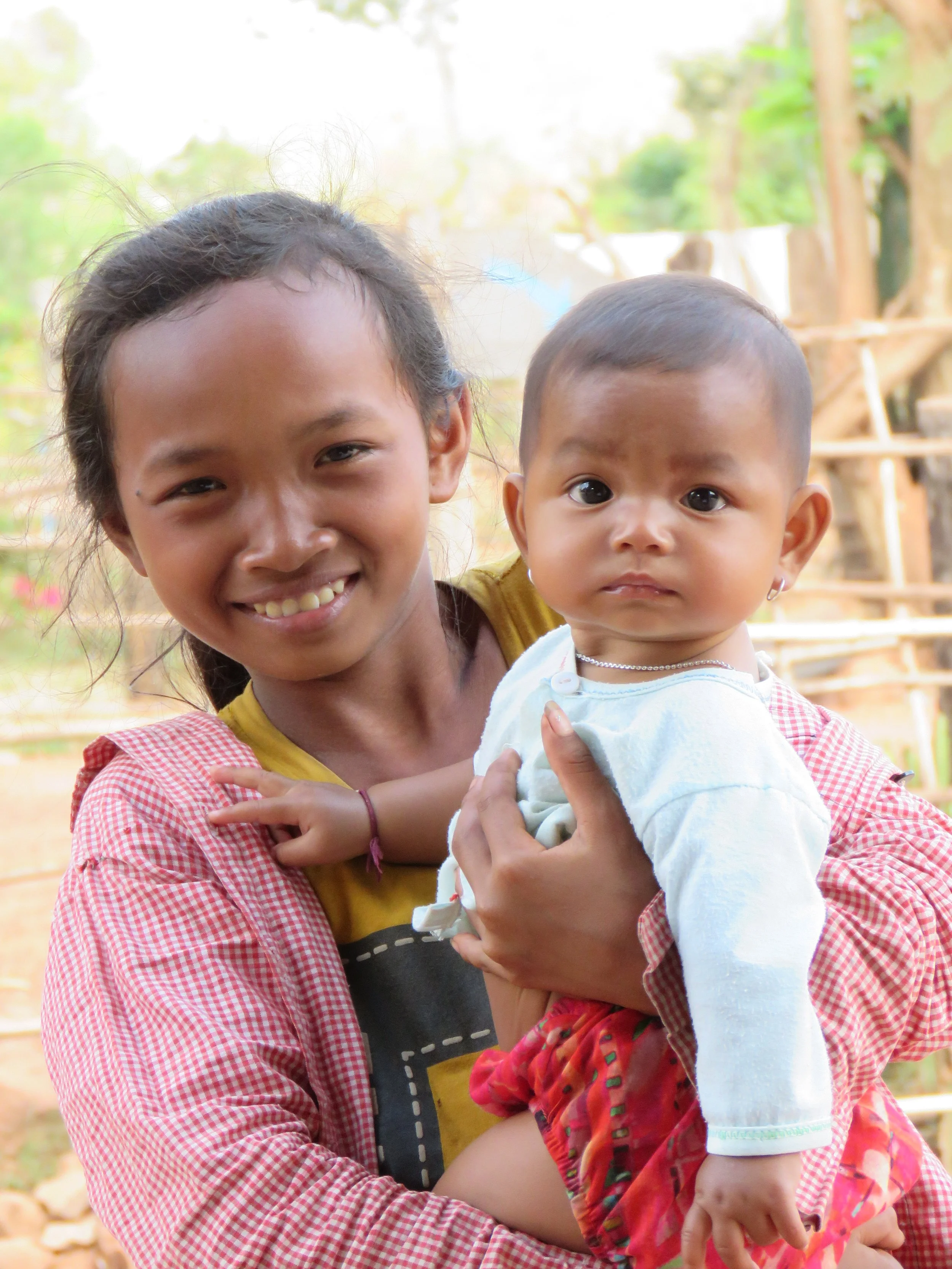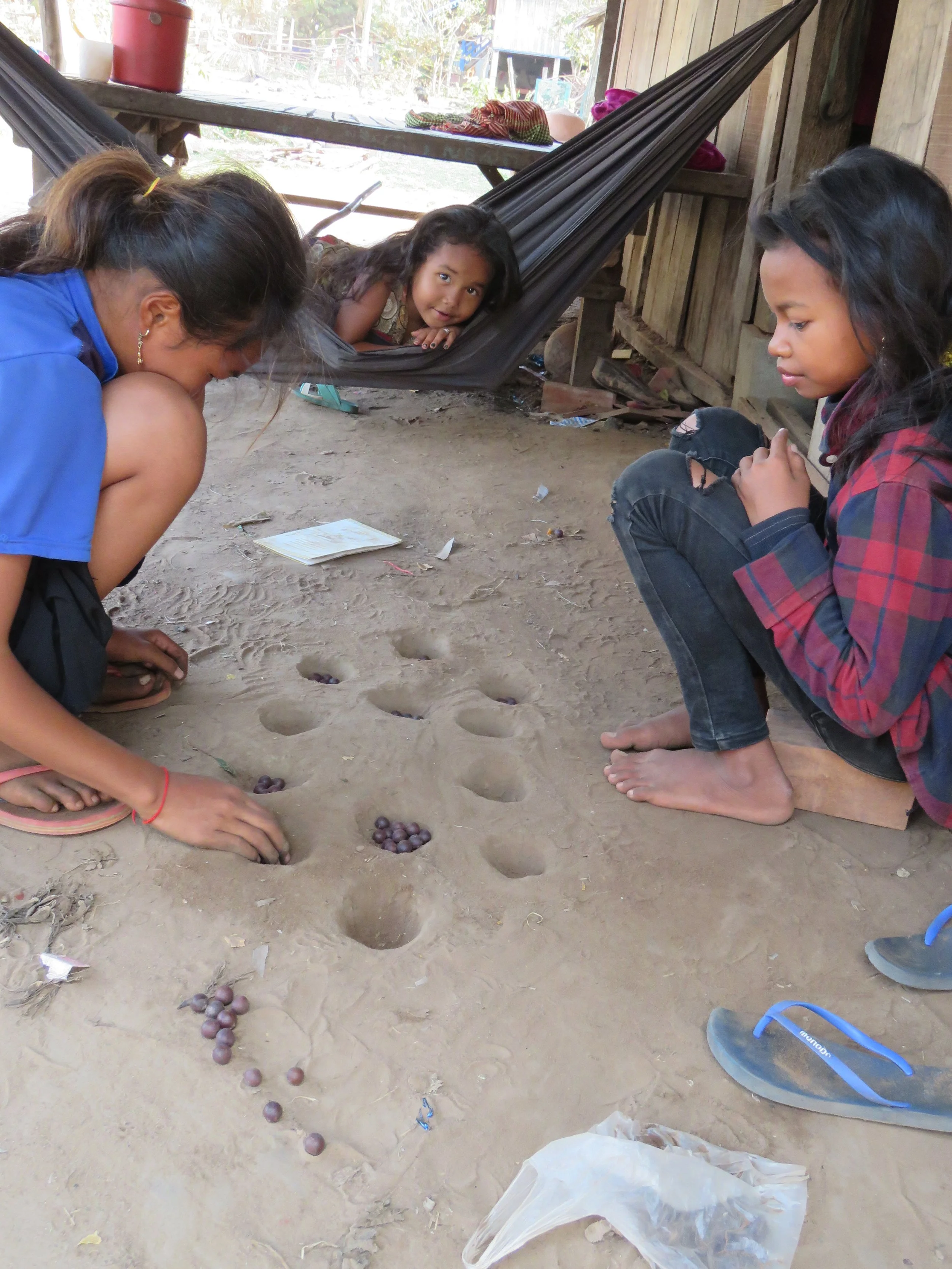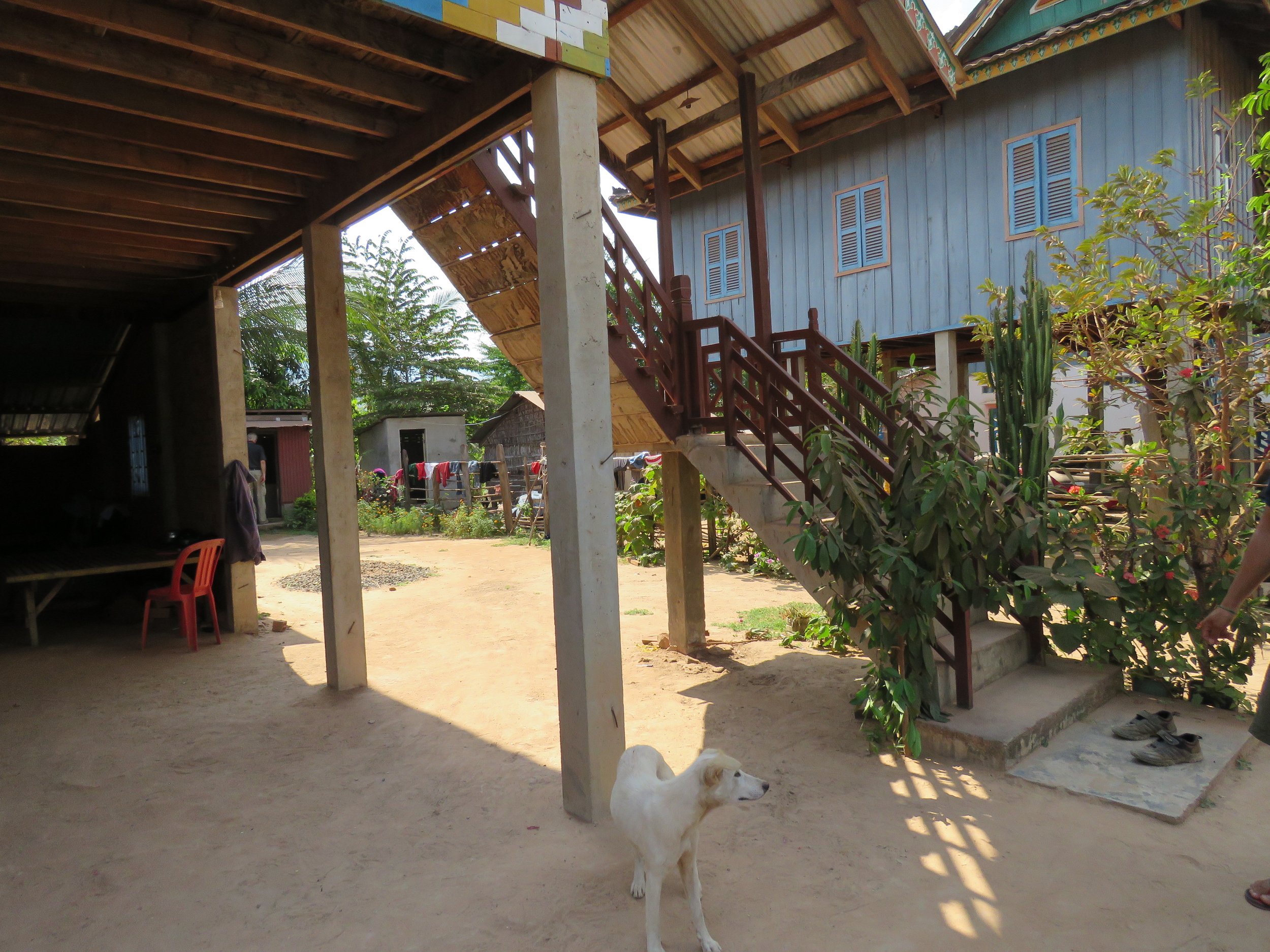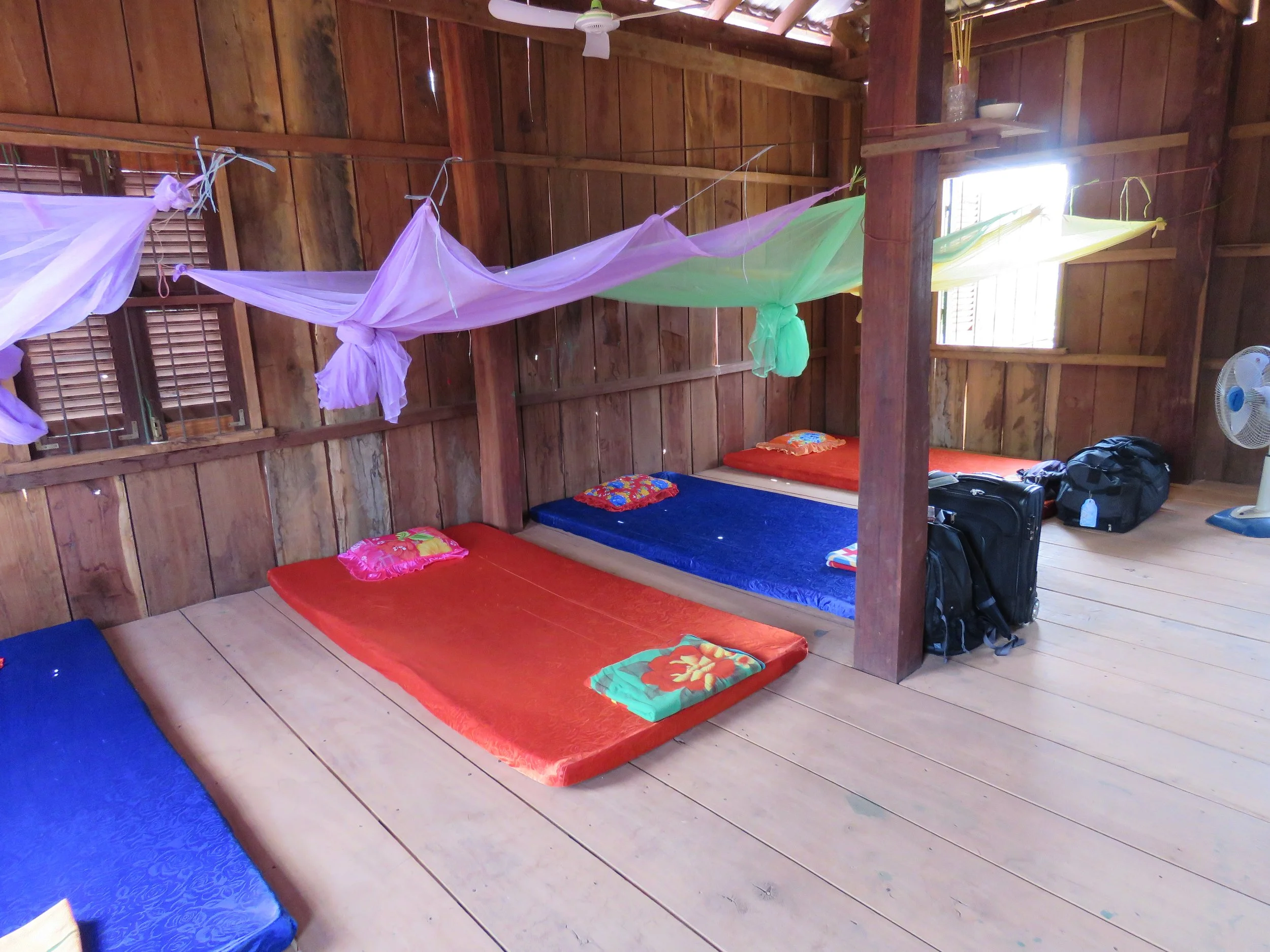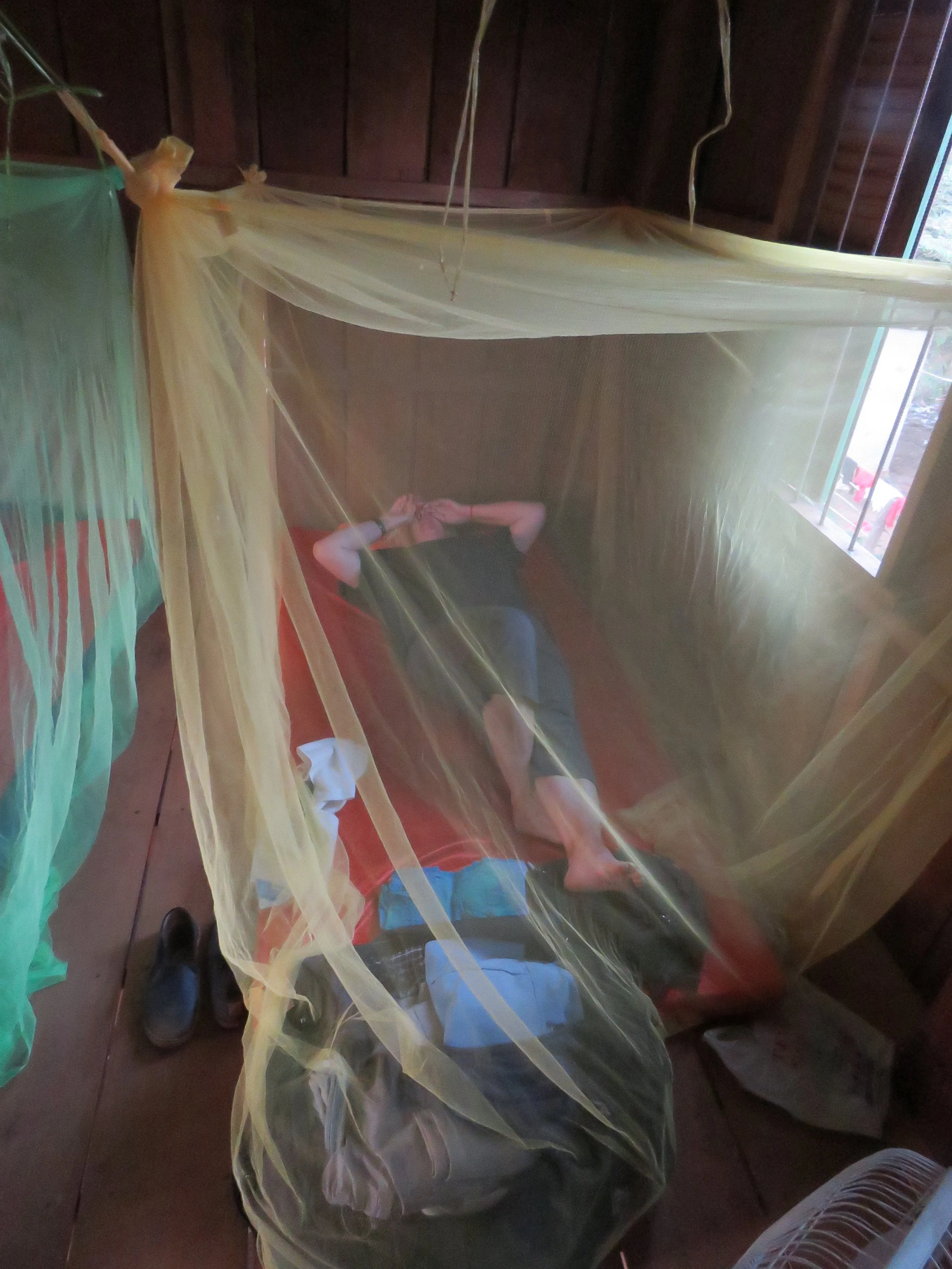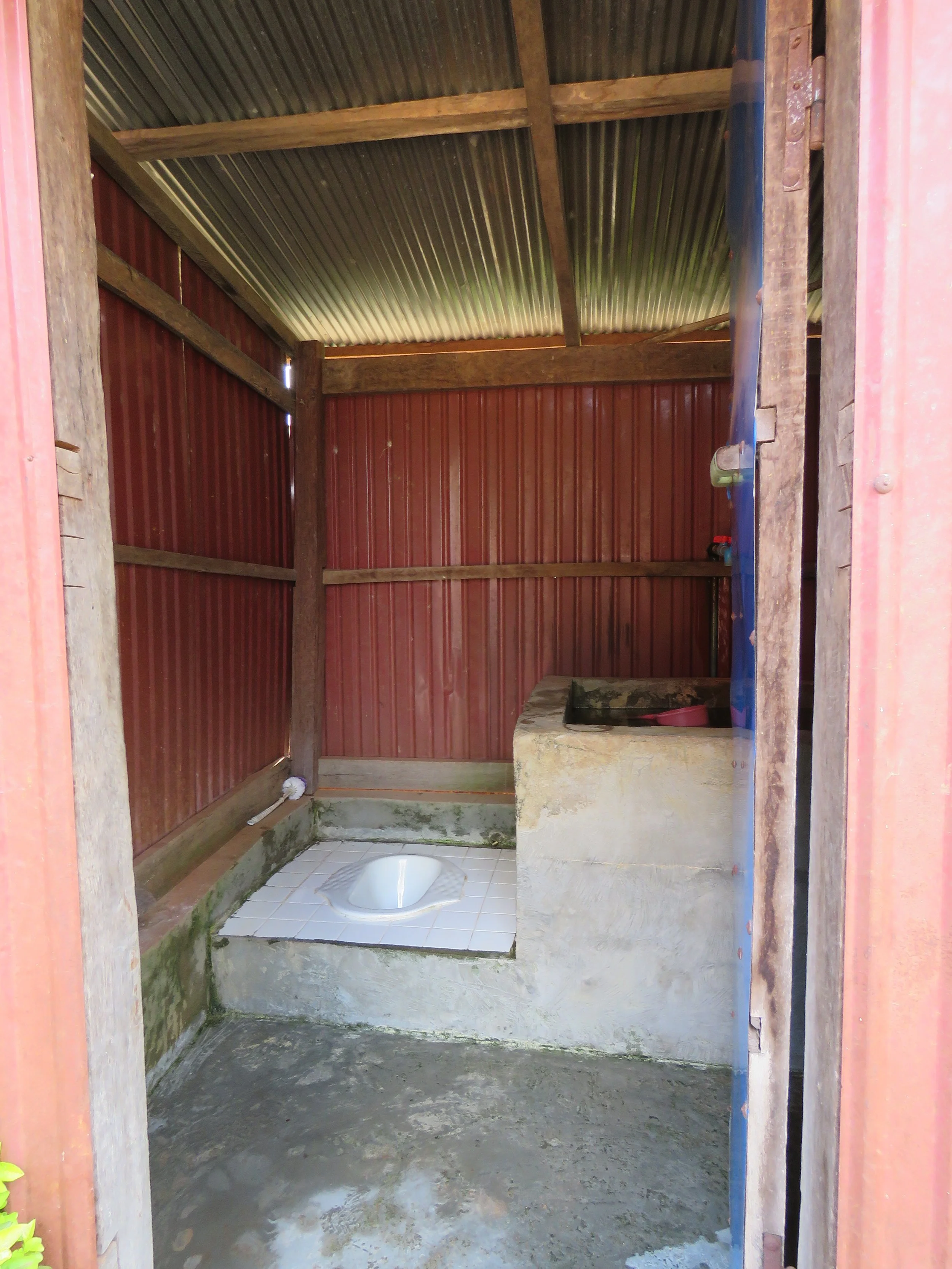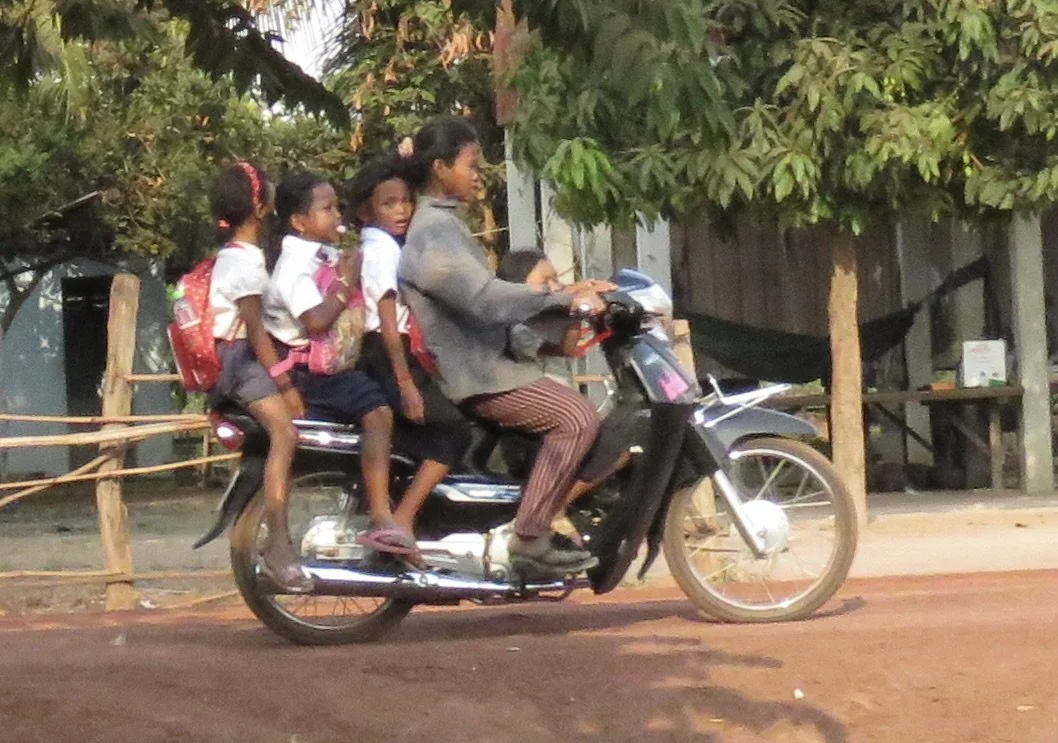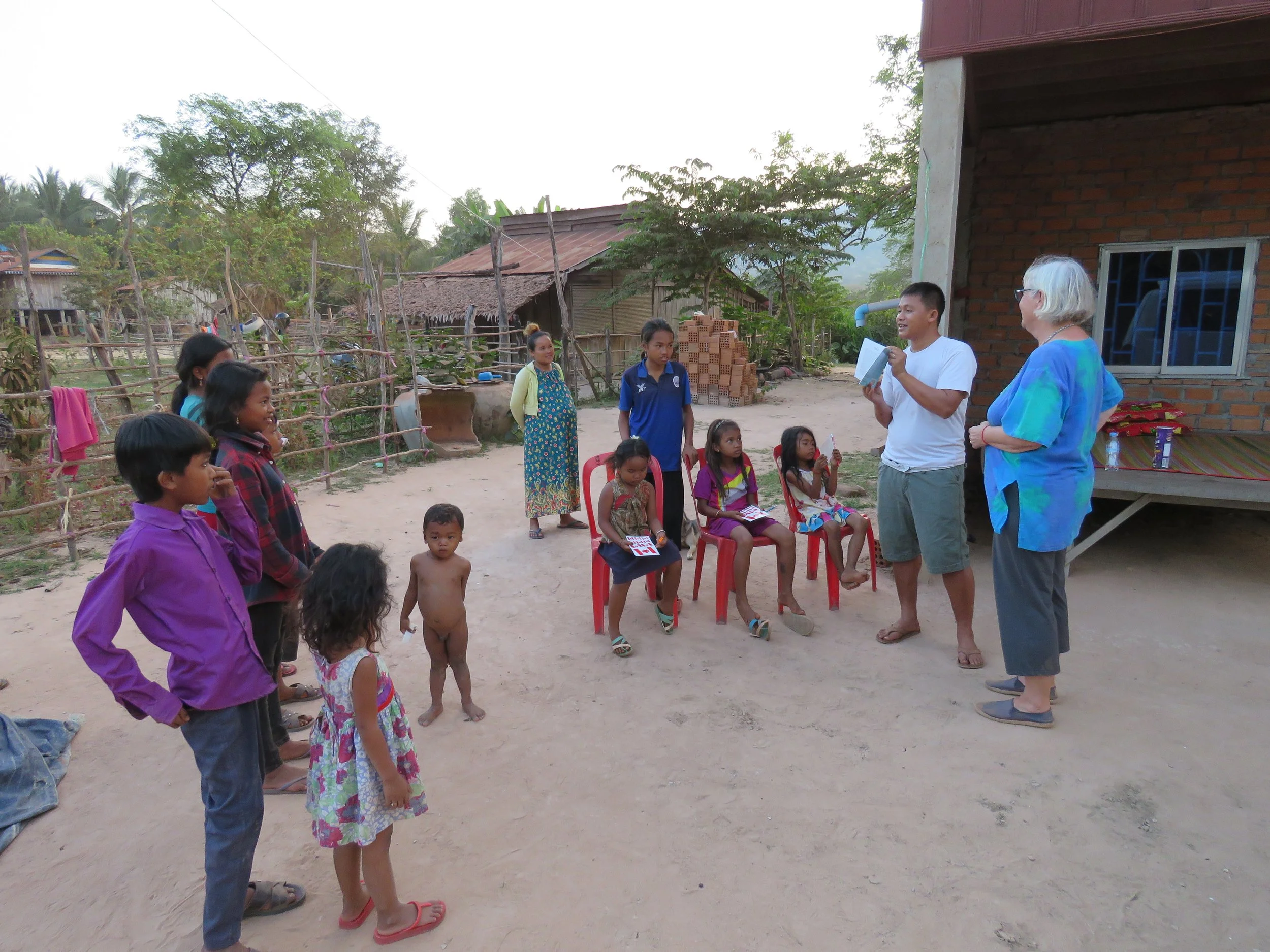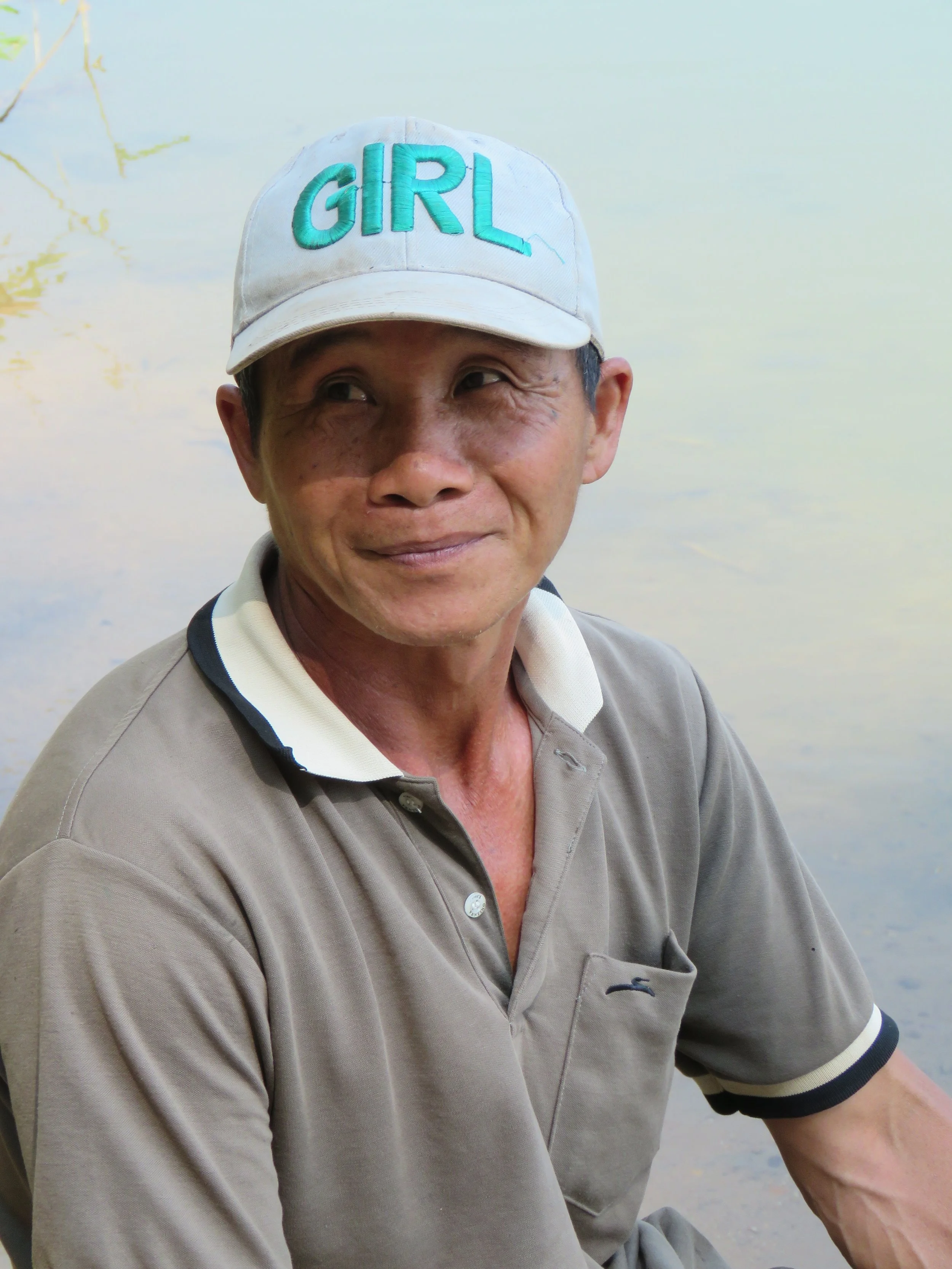The view from our ‘bedroom window’.
When we traveled to Cambodia, the main reason was to embark on a 15 day trek that would show us much of the country.
In their online itinerary Cambodia Cycling offered, as part of their guided trek, the option of a home stay. Staying with a local family really appealed to us as a wonderful way to learn about local life and to meet people.
But once we were in the country, I worried about a home stay. What kind of house would it be? Would it truly be a local home? The local homes look pretty darn spartan.
The planned home stay for us happened on our last night, after more than two weeks of seeing Cambodia, staying in many different locations and walking for 15 days through national parks, to temples and through jungle.
It was just us and our cheerful guide, Po as well as a driver. South of Phnom Penh our van turned into the hills and bumped along smaller and smaller roads until we entered the natural area of Kirirom National Park. Villages were far and few between. Finally we drove into a small village with traditional local houses. The houses were well kept and ornately painted. The yards look swept and tidy. We noticed lots of ‘homestay’ signs on the houses. We drove through the village, past the school and temple and into an area where the road ended at some picnic shelters over large tables. This turned out to be the ‘Women’s Restaurant’ - a communal kitchen were visitors are fed. Under the tables were tired dogs who had flopped down in the dirt, sound asleep.
Kids play a traditional game in the dirt floor under their house.
We hiked to some lovely waterfalls in the dense jungle. Then we were taken back into the village and to one particular house that was to be our home for the night. Slowly, over the next day, we pieced it all together and started to understand how it works.
In 2002 a German NGO came to this area to convince locals not to cut down any more forest. They explained how slow the trees grow and how, rather than sell timber, they could make a much better income by protecting the environment and inviting tourists to come and spend money. I’m not sure how long it took to convince the people but when all was said and done now, some 20 years later, the community thrives, the environment is protected, the people have learned diverse skills and host visitors from all over the world. If they come. They need a lot more publicity to make this place really known.
We watched rice milk being made.
But the foundation is great and, so far, proving to be sustainable.
We are told that about 300 women now work locally rather than having to go to a nearby city for work. They take turns growing food, cooking it, cleaning, and preparing breakfast, lunch and dinner in the outdoor communal kitchen where the visitors come.
After our dinner of fried pork and pineapple, rice and fried noodles, we went to our home stay. The traditional house, like the ones we have seen everywhere throughout Cambodia, is built on poles. Underneath is a sitting platform on which a clean mat is spread in the shade for visitors. Upstairs is one large room. I’d been dying to see what was in that main part of a house.
Our beautiful Homestay house.
Now I know. There is nothing! Absolutely nothing. Except for sleeping mats for the entire family and one tiny shelf holding some incense and a cup of water for the house spirit. No pictures on the wall, no decorations.
No air conditioning of course. But at least there was a ceiling fan.
No wifi.
No running water.
A squad toilet only next to the house.
The host for the western guests puts a thin foamie and a pillow on the floor but those are only for the guests - the locals sleep on the hard floor on a woven wicker mat. Above the sleeping pad is mosquito netting. We had the room to ourselves and deducted that the family slept downstairs, somewhere, during this night.
The families in the village take turns hosting so that they are only displaced a few nights per month but earn money for hosting.
The kitchen of the house is a small wood fire outside on the dirt, with a pot or two simmering. The family’s cow sleeps next to it and is taken back into a field around 5 AM.
I had expected a night in a village to be peaceful and quiet but instead it was a cacophony of sounds all night long. The radio music stopped around 1:30 AM. The dogs never seized barking. The roosters crowed until midnight and started up full swing again around 3 AM. The crickets and other things happily chimed in. By 6 AM all of the motorbikes were roaring out of the village, taking the men to their jobs.
A meal in the outdoor community kitchen.
The women have learned many skills and organize the sales of drinks and food, they make a few crafts to sell and plan meals and overnights for the visitors.
The children all attend school and have the option of English lessons after school, taught by a volunteer.
On the way to school.
All in all a very interesting look, not only at life in a rural Cambodian village, but also at how a well run sustainable project like this can both protect nature and provide a more solid income for the local population. It was explained to us that the money not only benefits the entire community (they share all income) but also supports very poor families living in the nearby area who were not able to provide enough food for themselves. These people now receive enough rice and staples to help support them.
We shared books, stories, school supplies and stickers with the kids in the village.
Our homestay was a wonderful experience and a glimpse into local life that I wholeheartedly recommend.
BOOKS (click)
Resources:
Cambodia Cycling offers both hiking and cycling tours, private or group, with great guides: https://www.cambodiacycling.com/Trekking.html
Here’s a great video of Chambok and home stays:
https://www.youtube.com/watch?v=scFpaJDSRDU
https://chambok.org
